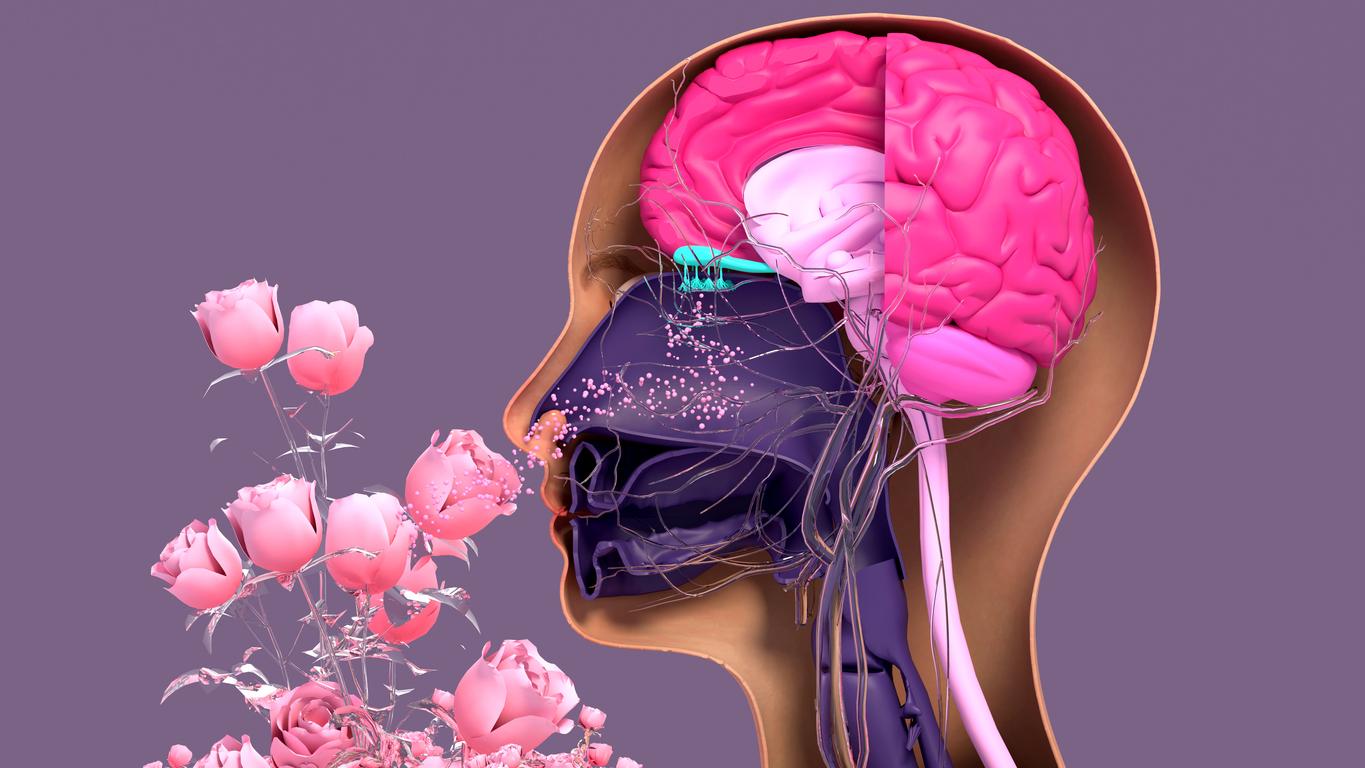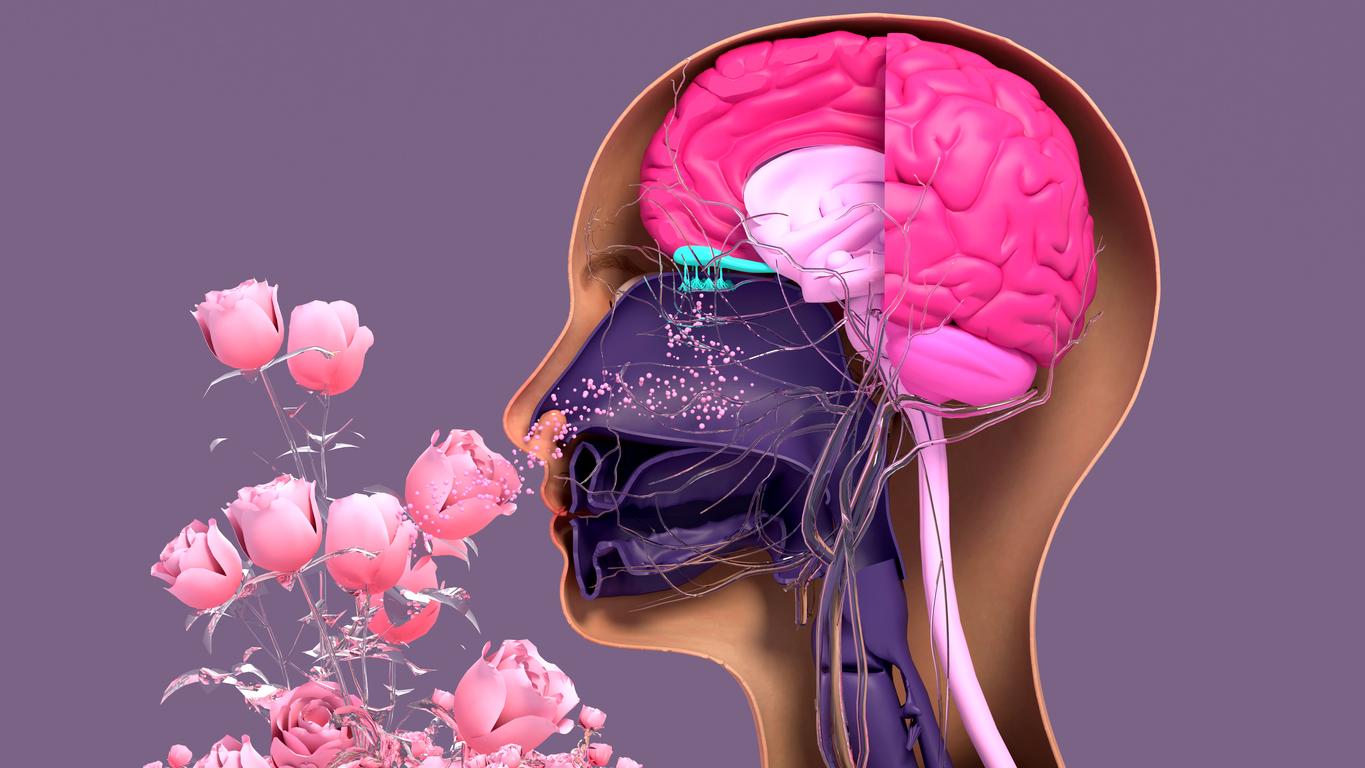The loss of taste and smell is now well known in the Covid-19 epidemic. But why does it take place? Researchers from the Institut Pasteur, the CNRS, Inserm, the University of Paris and the Assistance Publique – Hôpitaux de Paris, have elucidated the mechanisms involved in the loss of smell in patients infected with SARS-CoV-2 at different stages of the disease. The study was published on the website Science Translational Medicine.
Until now, it was thought that what caused the loss of taste and smell was edema, located at the level of the olfactory cracks, preventing odor molecules from reaching the olfactory nerve cells. But according to this latest study, the cause would be different. Anosmia would in fact be caused by infection of sensory neurons, which would cause persistent inflammation of the epithelium and the olfactory nervous system. The study summarizes 5 explanations for this loss, illustrated by a diagram.
The olfactory bulb contaminated with the virus, sometimes long term
Deep in the nasal cavities is the sensory organ that makes it possible to distinguish smells, the very one that is damaged by the virus. The olfactory nerve and the olfactory nerve centers in the heart of the brain are also contaminated with SARS-CoV-2. The latter penetrates the olfactory bulb and “spreads to other nerve structures where it induces a significant inflammatory response”, underlines Hervé Bourhy, epidemiologist, co-author of the study.
How to explain that anosmia and ageusia persist when we are no longer sick? If the virus is apparently no longer active, it persists in these places. However, it is no longer necessarily detectable via a PCR test.
Source:Institut Pasteur, “Covid-19: discovery of the mechanisms of short and long term anosmia”, May 5, 2021.
Read also:
- Covid-19: how to cook without taste or smell?
- Loss of smell and Covid-19: the majority of patients recover after 2 months


















